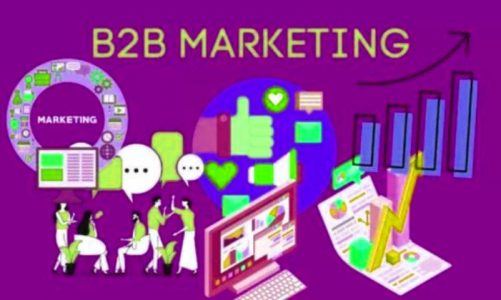Communication Channel: When it comes to giving visibility to our brand messages, we are always faced with the same dilemma, conditioned by limited material and economic resources.
Which channel is most effective?
Do I have to use many or is just a few enough?
How can I measure a specific channel to know if it works?
These and many other questions are what must be asked before planning any communication plan. And today, with the jungle that the media has become, despite the great decline in paper, it is increasingly complex to give accurate answers.
However, by applying logic, which is supposed to be within the reach of any person reasonably trained in marketing and communication, it is possible to separate the wheat from the chaff and keep what will really be useful for brand communication.
The First Thing: Know Your Company And Your Target Audience.
“If you do not know yourself or your opponent, in every battle you will be defeated,” And it’s true.
If you do not know what you are as a company, what differentiates you from the competition or what you really add value, you will go out into the market without knowing how to face it. Most likely, you will suffer a lot and almost always lose.
If you also don’t know who you are competing against, you will have small triumphs and big defeats. Therefore, before starting to carry out communication actions without rhyme or reason, on the channels that you believe are the best, or are fashionable, spend some time analyzing your company and environment.
And there are many techniques and tools to do it, some of them already pointed out in this blog. The important thing is not that you choose one or another specific tool, but the conclusions you reach. These will be the ones that show you the way to start thinking about which channels will be the most effective in the specific case of your SME.
What am I strong in? How do you compete in my market segment? What is the typical customer of my product? What aspects of the products and services are most valued by customers? The answers to these and other questions are the first stone of your communication plan.
The Second Most Important And Unknown Communication Channels Are The Ones Closest To You.
They are the great forgotten ones of marketing and communication in SMEs. And they are two channels that are very close to you, they are accessible and, furthermore, their cost/benefit ratio is very attractive. Which are?
Surely you know the first one: they are your own clients. Yes, your clients are the best means of communication you can count on. Stop and think; they are people and companies that are happy with you, that for some reason position you above your competition and that would surely recommend you. And there is the key, in the word “would recommend”.
Because a customer, no matter how satisfied they are, usually does not recommend anything, unless they are asked or encouraged to do so (think of Amazon when you read a book and it encourages you to rate and comment on it…). That’s the challenge! The sales cycle does not end with loyalty, but with the recommendation.
How is it done? The first thing is to understand why your client chooses you. And then, highlighting that client. An example would be the “success stories” that are published when a client achieves objectives thanks to your collaboration. And there are many more techniques. The important thing is to make your satisfied customer visible, give them a speaker.
The second channel, even more accessible, is in your own employees. Who better than a “house” professional to communicate how well your company is? Do you remember the ad that said “I have a friend in Balay”? A recommendation “from within” that also transmits a company culture of great value.
But, to be able to use this channel, you must consider your employees as customers, that is, you must carry out internal marketing that makes these employees so proud to work in your company that they become the loudspeaker in the market. What is not easy? Sure. What can be done? Also safe. In fact, hundreds of companies are doing it. What they have in common: they put the employee and their well-being at the center of their strategy.
If you take care of your clients and your employees, you have already come a good part of the way to making them prescribers. It’s worth a try.
Criteria For Selecting The Appropriate Communication Channel.
Before communicating anything, stop and think.
You already know who your potential clients are and where to find them.
You also know the differential value of your brand and what it brings to those potential customers.
And, in addition, you can build a coherent message that connects your brand with what those future customers expect.
To all this, add that you know if your market is B2B or B2C, since the channel differs if the client is a consumer or an industry, and the geographic scope in which you are going to compete.
With all this arsenal of knowledge, it will now be easier for you to start thinking about which communication channels are most suitable for your SME.
The main criterion that you must apply is segmentation. To optimize the investment in communication, the channel must be as specific as possible based on your client’s profile. Avoid the general media if you have a very profiled client.
The second criterion is visibility. Appearing on Twitter for a mere second on the timeline is not the same as being present for an hour in a webinar. Exposure time determines the visibility of your brand. The longer the time, the more visibility.
And the third criterion is the overcrowding of the channel, related to the previous one. A channel that is saturated with ads, sponsorships or banners will be a perfect channel to make your brand invisible to the audience.
I could add even more criteria, but I think that, as a starting point, these three are enough to make decisions about the channel.
Some Communication Channels: Personal Assessment.
I’m going to start with a channel that I think is still a step above the rest today. I mean email. This channel, used well, is one of the best tools to communicate with your audience. If you have built up a good database of prospects, you will have a very segmented channel, with great visibility and moderate massification) (now communication tends more towards social networks).
In case I don’t convince you, marketing expert Rosana Rosas gives you some reasons for the effectiveness of well-done email marketing.
And, of course, measuring engagement can be done automatically and in real time. And its cost is affordable…
Direct “Face To Face” Channels.
Here I include corporate events (online and offline), webinars, product presentations, sector fairs or company visits. They are direct because the relationship with your potential client is also direct.
These channels are also highly segmented, have good visibility and are low in mass. On the less positive side is its higher cost compared to other channels.
They will be useful to you if you have a group of clients that is not very large, although well profiled, your product or service is of high value and the client is going to be one for a long time. They are highly recommended channels for B2B markets.
Media (online/offline).
Unless your product or service is aimed at the general public, I do not recommend general media.
Luckily, for each sector there is always one or more media specialists in it. You can think about the chemical industry, food, transportation, cinema… Always look for the reference media or media in your sector, analyze the audience and assess if it can be a useful channel.
From my professional experience, I can tell you that, in general, collaboration with sectoral media is almost always a good investment, which can also be measured. They comply with the segmentation, although some are already beginning to be overcrowded.
I’m going to include the podcasts here. I already know that, strictly speaking, they are not a means of communication, although they can be assimilated to radio… In some cases, with more than interesting audiences, they are a channel worth valuing. And they have the advantage of being much more affordable than traditional sponsored ads. You have many types of podcasts, with very varied audience profiles, so it would not be difficult for you to find the one that best suits your company.
Social Networks.
Every month a new social network appears. And of the networks that are already active, many change their algorithms or functionalities from time to time. That’s why I’m going to focus only on the best known ones.
LinkedIn: A professional social network, at least in its purpose. A very high segmentation of professional profiles can be achieved; recently the platform has increased the typologies. Visibility is limited, like any social network, and its degree of massification is beginning to be problematic.
LinkedIn, however, for the B2B market, is superior to any other social network thanks to its subscriber base and the functionalities it offers. I recommend this article by Silvio Manuel Rodríguez, LinkedIn expert, where he explains some of its potential.
Facebook: It is one of the most used by SMEs when it comes to having a company profile. If your end client is on this network, you must have a presence on it. It allows direct interaction with your customers and each action taken can be measured. And it is one of the most segmented.
On the negative side is the visibility, which is very low due to the great crowding of the canal. Even so, it is recommended for all types of SMEs.
Instagram: A network designed for companies where the image of the product or its uses are important. Compatible and complementary to Facebook, it is also very popular.
Twitter: I admit that I have a special fondness for this network, which is why my assessment may be biased… I believe that short messages with a very short life do not achieve any impact on the company’s objectives. It is a network with very low visibility and highly crowded. Except to have a testimonial presence in it (without any real effect) it is almost better to forget about it from a professional point of view.
Only if you target a very broad and diverse audience could you be interested and, even then, the cost to achieve that visibility will not be small.
Youtube: Videos are an excellent platform to channel our communication, whether you are in a B2B or B2C market. YouTube is usually used as a repository channel for company videos, which are used in other channels such as the corporate website, email or other social networks.
Of course, the content must be of value and the production of acceptable quality. If you are willing to invest in it (time and resources) it is a very good channel to make your brand known.
Despite everything, social networks in general should not be the main communication channel for your company. It is not as direct as others you have seen and managing them correctly requires time, dedication and effort.
If you do not provide valuable content, your presence on the social networks will be worth nothing. Therefore, select only those that really help you meet your objectives (generate brand, traffic, sales…) and that you are capable of managing with the resources you have.
There is nothing more negative for a company’s image than accessing its social network and seeing that it is not updated or that it lacks content that provides something of interest.
The Three Axes Of Effective Corporate Communication.
I commented some time ago on LinkedIn about the three factors that must be integrated and made compatible so that business communication can connect with the target audience.
And it is not only the channel that is crucial, as you have seen, but also selecting the appropriate audience that you are going to address. Channel and public are related. You must direct your communication towards those potential clients who may be interested in your message (product, content, news, invitation to an event, information…). And in turn, choose the channel where those clients are located, the more profiled the better.
And the third factor is the message, logically. If you don’t have anything of interest, it doesn’t matter if the client and the channel are correct. Your communication will be ineffective at best, and negative at worst.
Therefore, selecting the channel is key to getting it right, a necessary but not sufficient condition.
And if you have felt overwhelmed by the large number of communication channels available and you have the feeling that you are not going to be able to go that far, don’t despair. Normally only two or three are used with any regularity. And you can use some more for support. You don’t have to be in all the places, better only in a few, but with intensity and quality.
And don’t forget that the most important people are in your own home, the employees and the clients. It is a good way to start, in addition to promoting these two interest groups will provide you with other additional benefits, such as greater well-being in the company, greater productivity or more loyalty to the brand.
I think it’s worth trying, right?




